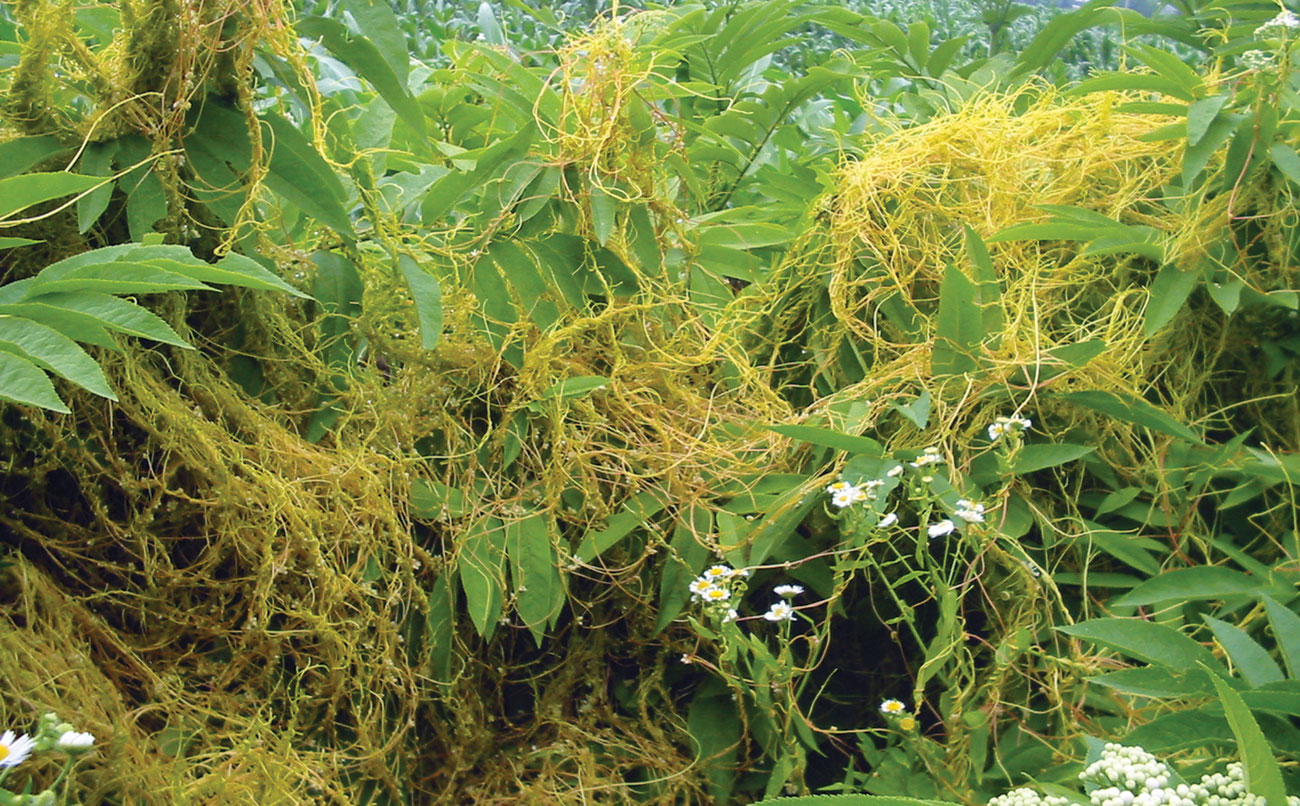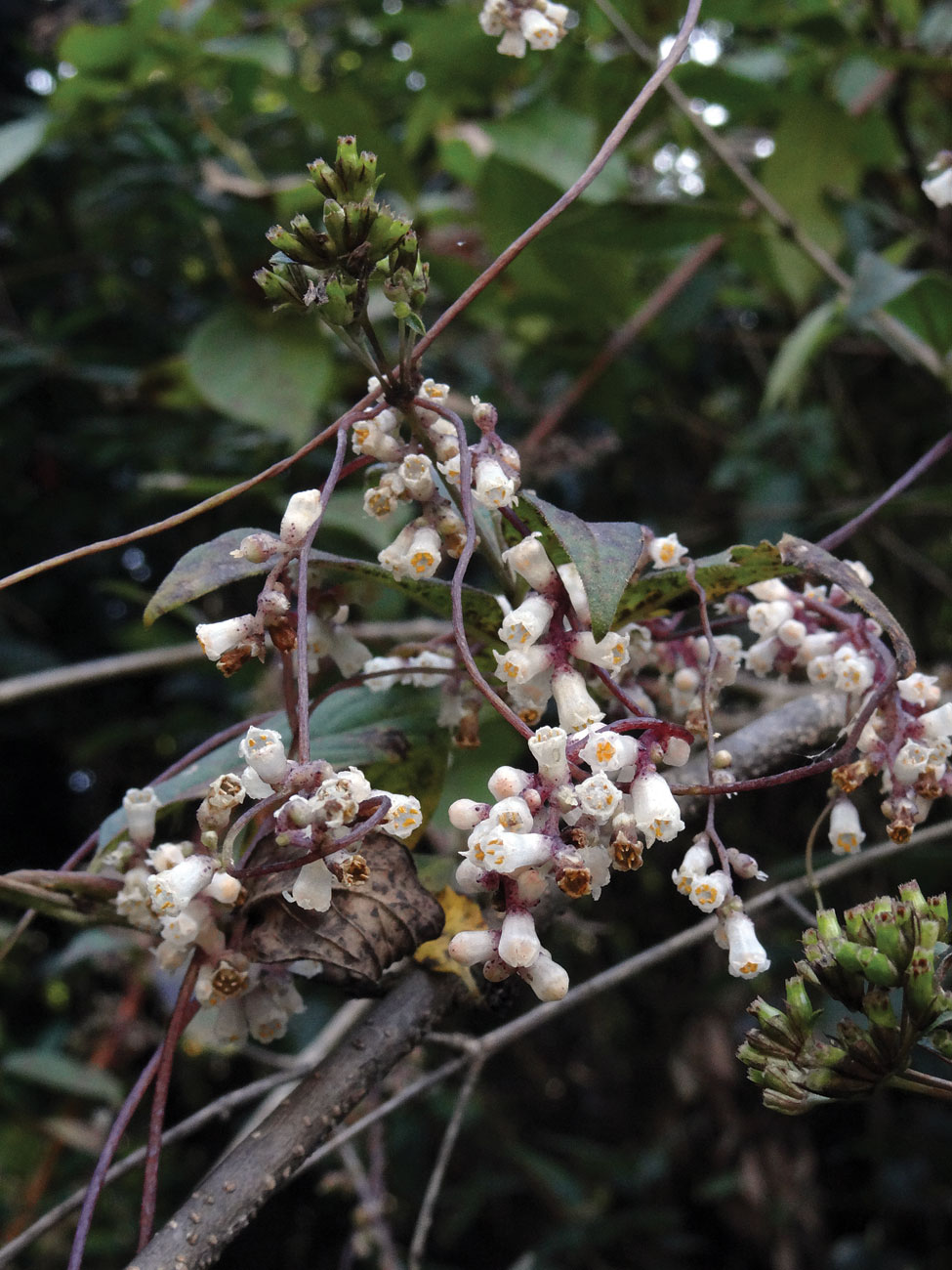Plant Pirates
First published in Sanctuary Asia,
Vol. 42
No. 12,
December 2022
By Soham Kacker
A rootless, leafless, glowing, tangled mass of translucent stems cloaks an old Acacia tree. What appears like a giant helping of botanical spaghetti is in fact one of the most cunning plant parasites on the planet – meet Cuscuta, or the dodder. The Acacia tree will likely die, but the dodder has moved to its next host – its probing tendrils already coiled tight around multiple neighbouring species. The hosts all eventually fall, but the dodder is here to stay.
Cuscuta seeds germinate on the forest floor, each seed giving rise to a weak root and a highly sophisticated growing tip. A large genus comprising around 200 vining, parasitic species, Cuscuta seedlings must find a host, or they will die within five days. Almost as they germinate, the seedlings begin to sense, and grow towards, chemicals emitted by their host plants – primarily volatile organic compounds that help plants communicate. Not only can the dodder ‘smell’ its hosts without a nose, it can differentiate between chemicals from different plants, only extending its tendrils in the direction of the species it is accustomed to parasitising. Upon contact with a host plant, the dodder coils around its stems, and the primary root dies away; the vine is now entirely dependent on its host. Nearly all Cuscuta species have a severe deficiency of chlorophyll, or lack it entirely, as indicated by their pale yellow, orange or pink stems. Unable to create their own food like most green plants, they have evolved specialised roots called haustoria, which grow horizontally into the host stems and tap into its nutrient transport vessels. Intimately interlaced with its host, the dodder draws all the water and nutrients required to flower, fruit and reproduce, effectively sucking the host dry.

What appears like a giant helping of botanical spaghetti is in fact one of the most cunning plant parasites on the planet – Cuscuta, or the dodder. Photo: Public domain/Wikipedia.
But food and water are not all the dodder steals. A recent study on the golden dodder Cuscuta campestris found that 42 regions in the dodder’s DNA, comprising 108 genes, originated from host species. Cuscuta species have evolved over time to pull-off a physiologically complex DNA heist from their hosts – incorporating the functional genes into their own genome, and using them to find and parasitise their hosts more efficiently by eluding their defences. This process of horizontal gene transfer (obtaining genes from an individual that is not a parent) is unprecedented in complex organisms, and its exact mechanism has still not been uncovered. In an even more astounding discovery, the study found that dodders can steal genes, modify them, and reintroduce them into their hosts to silence, or ‘switch off’ some host genes – perhaps those linked to defence or reproduction. This level of genetic manipulation, only achieved by humans in the early 1990s through recombinant DNA technology, was already in the dodder’s arsenal millions of years ago!
Cuscuta comprises just 200 of the known 4,000 parasitic plant species – collectively representing one per cent of the plant kingdom. Groups such as the mistletoes (Viscum sp.) are also parasitic, and are pharmacologically and culturally significant. On account of their unique reproductive biology, parasitic plants are chronically understudied as they are hard to find, and usually impossible to cultivate ex-situ, meaning they are almost absent from conservation assessments. A newly launched project at Botanic Gardens Conservation International in the U.K. aims to document and facilitate the cultivation of parasitic plant taxa across the world, so we can protect, and also learn, from these pirates of the plant world.

Dodder flowers can range from white to pink or yellow to cream in colour. Their seeds are minute, produced in large quantities and can remain viable for 5-10 years in the soil. Photo: Soham Kacker.
Further reading:
Davis, Charles C, and Zhenxiang Xi. ‘Horizontal Gene Transfer in Parasitic Plants’, Current Opinion in Plant Biology, Vol. 26, 2015, pp. 14-19, https://doi.org/10.1016/j.pbi.2015.05.008.
penn_state. ‘Parasitic Plants Use Stolen Genes to Make Them Better Parasites’, EurekAlert!, https://www.eurekalert.org/news-releases/604782. Accessed November 11, 2022.
Soham Kacker is passionate about plants and has apprenticed at the Auroville Botanical Gardens and the Aravalli Biodiversity Park. Based in New Delhi, he is currently a research student at Ashoka University, focusing on plant ecology and conservation.



